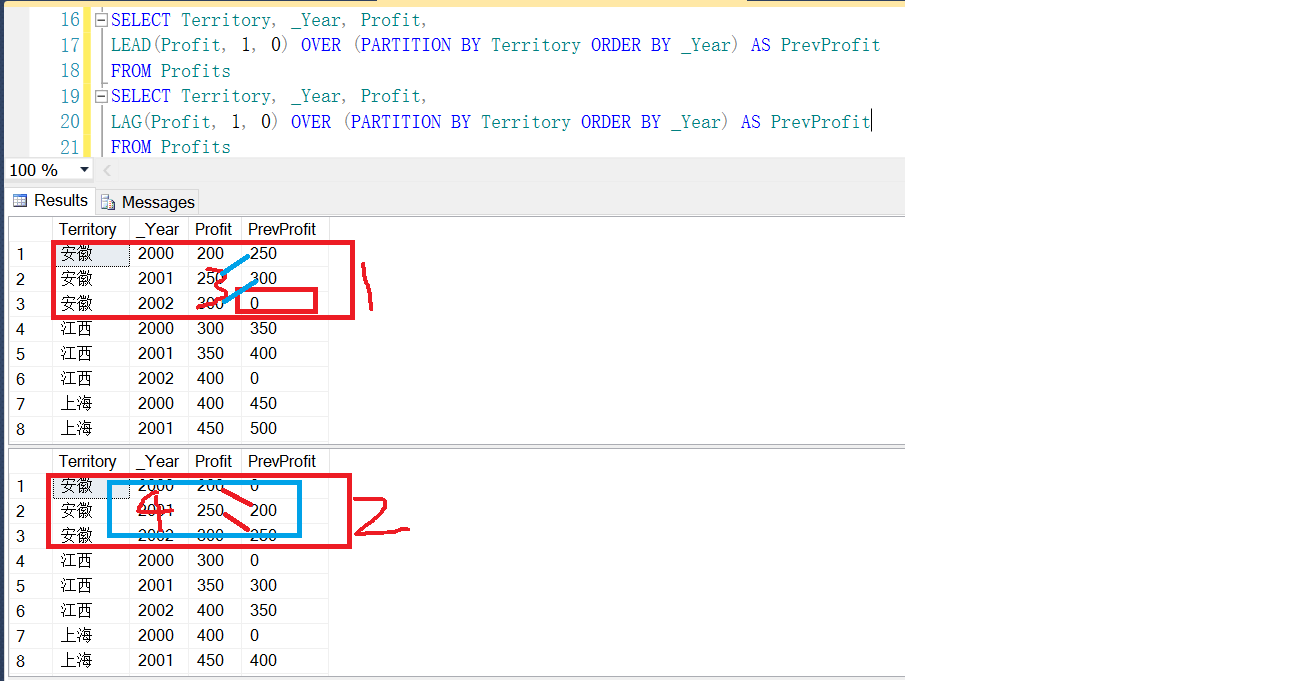The following explanation from MSDN
LEAD provides access to a row at a given physical offset that follows the current row. Use this analytic function in a SELECT statement to compare values in the current row with values in a following row.
LAG provides access to a row at a given physical offset that comes before the current row. Use this analytic function in a SELECT statement to compare values in the current row with values in a previous row.
--A. SELECT Territory, _Year, Profit, LEAD(Profit, 1, 0) OVER (PARTITION BY Territory ORDER BY _Year) AS PrevProfit FROM Profits --B. SELECT Territory, _Year, Profit, LAG(Profit, 1, 0) OVER (PARTITION BY Territory ORDER BY _Year) AS PrevProfit FROM Profits --C. SELECT Territory, _Year, Profit, LAG(Profit, 2, 0) OVER (PARTITION BY Territory ORDER BY _Year) AS PrevProfit FROM Profits
First of all, compare with "LEAD" and "LAG"(A and B region code), here is the result:
Compare with 1 and 2 region only, if it's "LAG"(B region code), _Year=2002 correspondent prevProfit=2001's profit and _Year=2001 correspondent prevProfit=2000's profit, but _Year=2000 no correspondent prevProfit, as it's LAG(Profit, 1, 0), so _Year=2000 correspondent prevProfit is 0."LEAD" it's opposite of "LEAD", _Year=2000's prevProfit= 2001's Profit.

2 within as to LAG(Profit, 2, 0), you can reference below code